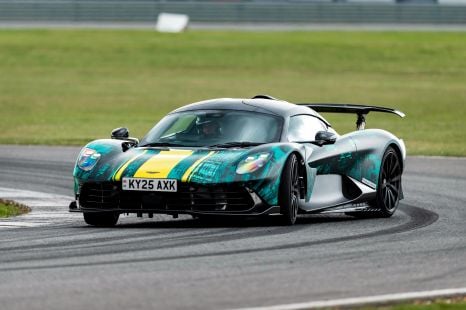

Angus MacKenzie
2026 Aston Martin Valhalla review: Prototype drive
4 Days Ago
Some might look at the new Jeep Gladiator as a bit too pricey, but it possesses a cool factor that can't be matched by its dual-cab rivals.
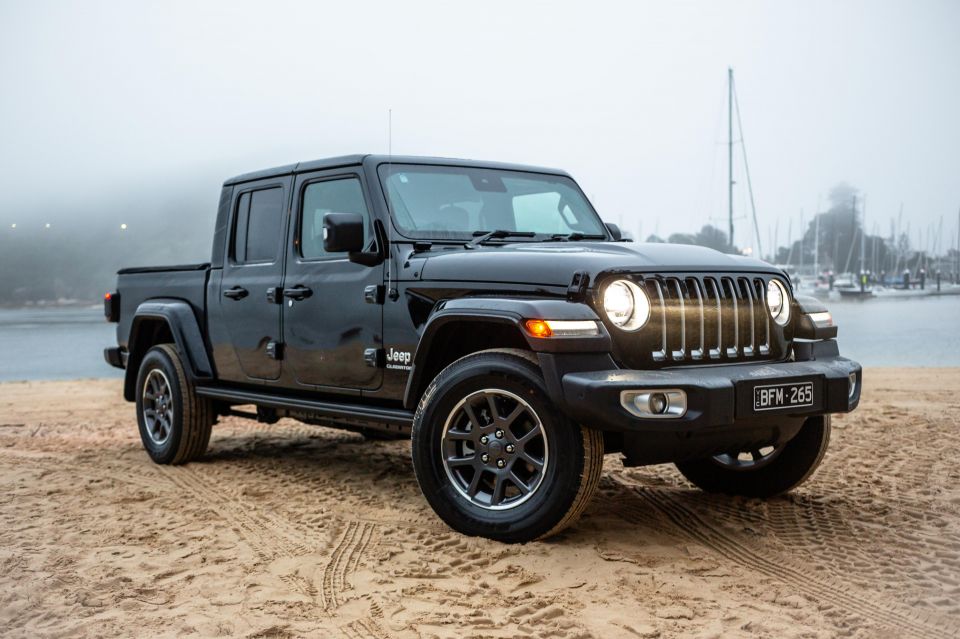
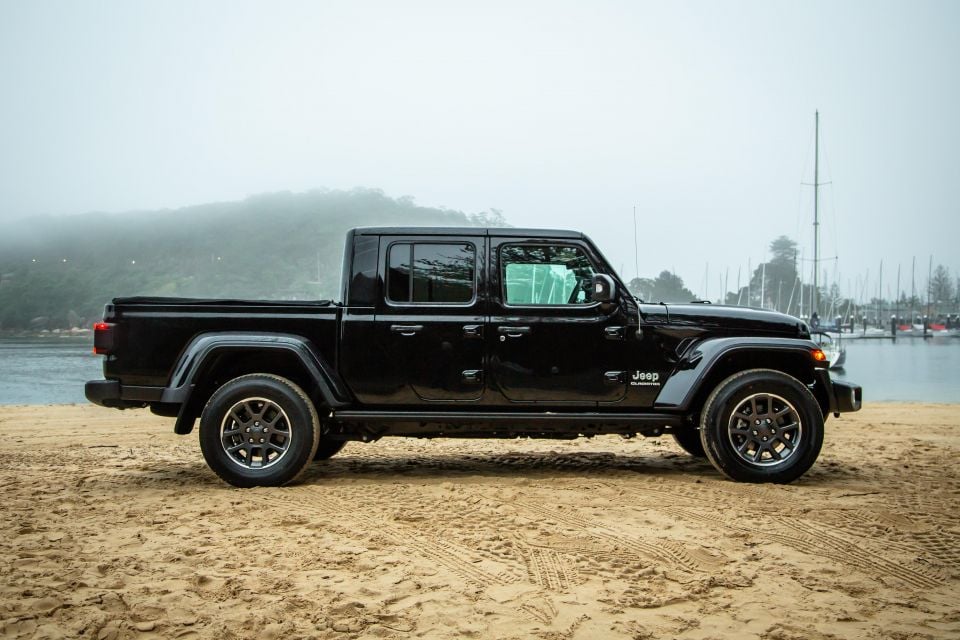

Senior Road Tester
New from
$75,450
excl. on-roads

Senior Road Tester
New from
$75,450
excl. on-roads


Senior Road Tester
New from
$75,450
excl. on-roads

Senior Road Tester
New from
$75,450
excl. on-roads
Quickly see how this car stacks up against its competition. Select any benchmark to see more details.
Where expert car reviews meet expert car buying – CarExpert gives you trusted advice, personalised service and real savings on your next new car.
Just over a year has passed since I was in the United States on a first drive of Jeep’s long-awaited Gladiator, but it’s only just landed on Australian soil – no thanks to implications around the COVID-19 pandemic.
The main focus of that first foray into what is essentially a Jeep Wrangler Unlimited with a tray on the back was its off-road performance through mud and some relatively tame rock crawling, the results of which proved it was more than capable at both.
Perhaps most surprising was the on-road ride comfort and an interior borrowed from the latest JK Wrangler, both of which go a long way to making the Gladiator entirely liveable as a daily driver.

It wasn’t my first time behind the wheel of the latest-generation Wrangler Unlimited. That came late in 2018 when we racked up more than 1000kms up and down the Southern California coastline from Huntington Beach to Encinitas with plenty of stops in between.
I left California with a new appreciation of the Wrangler – although riding on dedicated BFGoodrich off-road boots fitted to my Rubicon tester, loud tire roar inside the cabin was one of my few gripes.
More recently, Alborz drove the Jeep Gladiator in New Zealand almost exclusively off-road and highly rated its prowess. We look forward to some local bush bashing in the coming months to confirm how it stacks up against the likes of the Ford Ranger Raptor and Navara N-Trek Warrior.
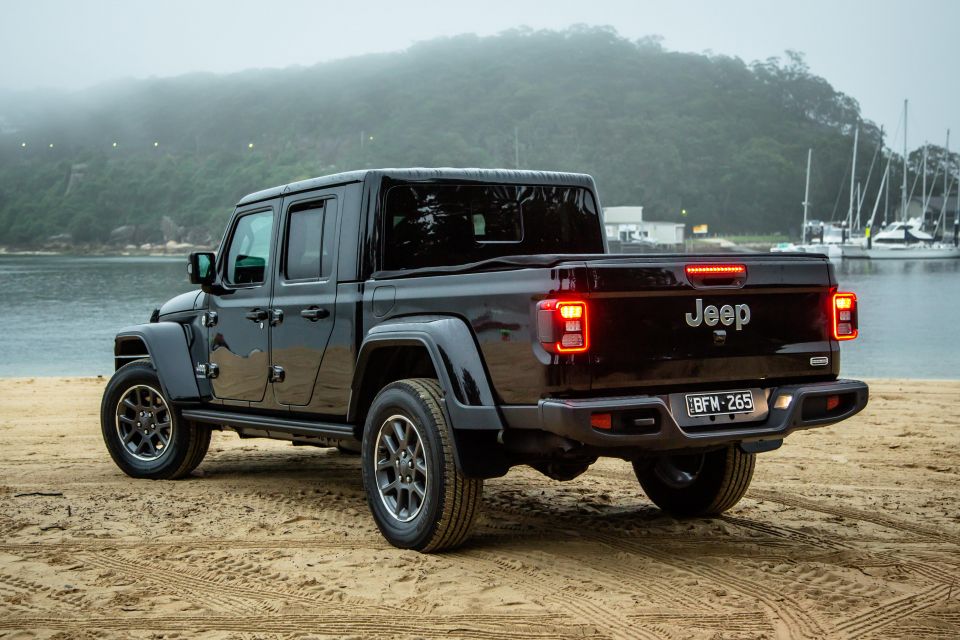
This time around we got to experience the Gladiator Overland on standard road tyres, perfect for a 24-hour urban assault. Naturally, we will get more time in the vehicle once initial orders are delivered and more stock arrives.
Jeep Australia has launched Gladiator with a simple, three-variant line-up including the entry-level Overland, hardcore Rubicon and the limited-build Launch Edition totalling just 100 units. Interestingly, it launches with just one petrol drivetrain.
Australians unanimously prefer a diesel engine under the bonnet of their ute, but when asked about alternative powertrains Jeep Australia representatives were tight-lipped.
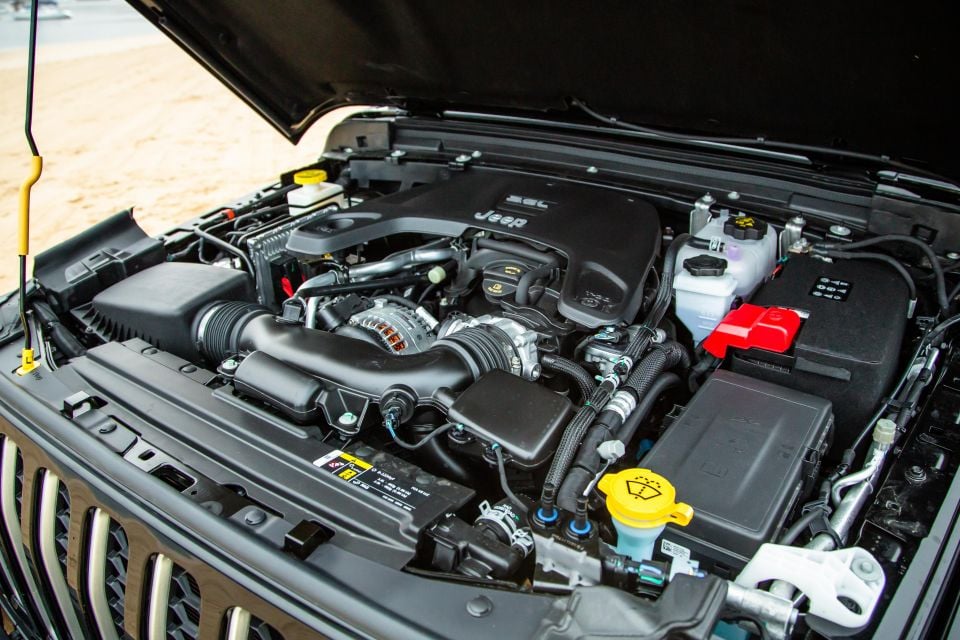
Jeep has positioned the Gladiator at the very top of the dual-cab ute segment with prices starting from $75,450 before on-road costs for the Overland, and climbing as high as $86,450 before on-roads for the Launch Edition.
It’s big bucks, but Jeep Australia boss Kevin Flynn is pitching the Gladiator at cashed-up lifestyle buyers rather than the traditional blue-collar ute owner in Australia, essentially limiting price-based rivals to just one – the Ford Ranger Raptor ($76,490 before on-roads).
However, there are other left-of-field opportunities such as the popular Ram 1500 starting from $79,950 but climbing to $99,950 before on-roads. But that’s a full-size truck, favoured for its larger larger proportions and towing capacity.
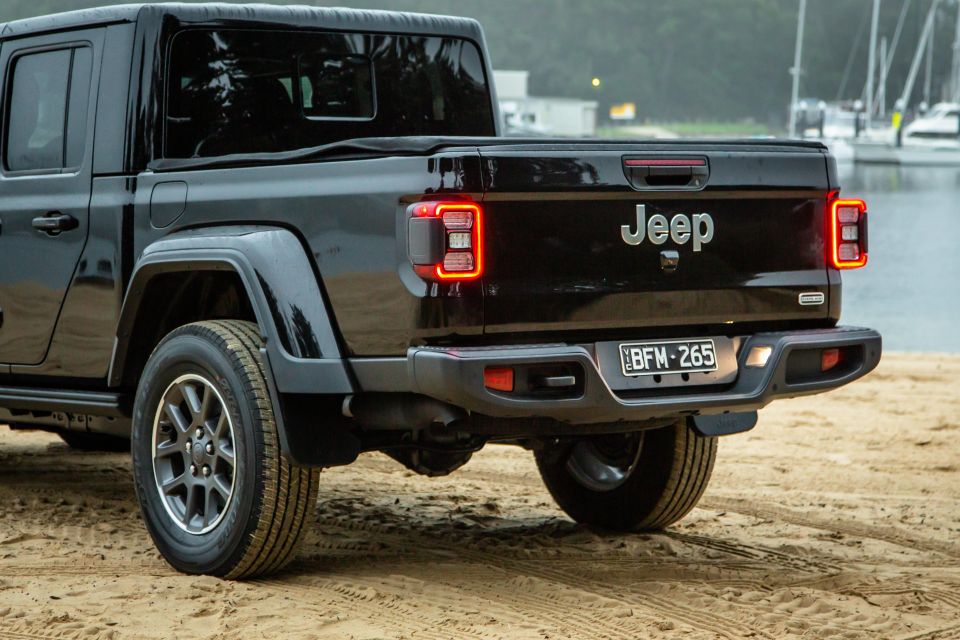
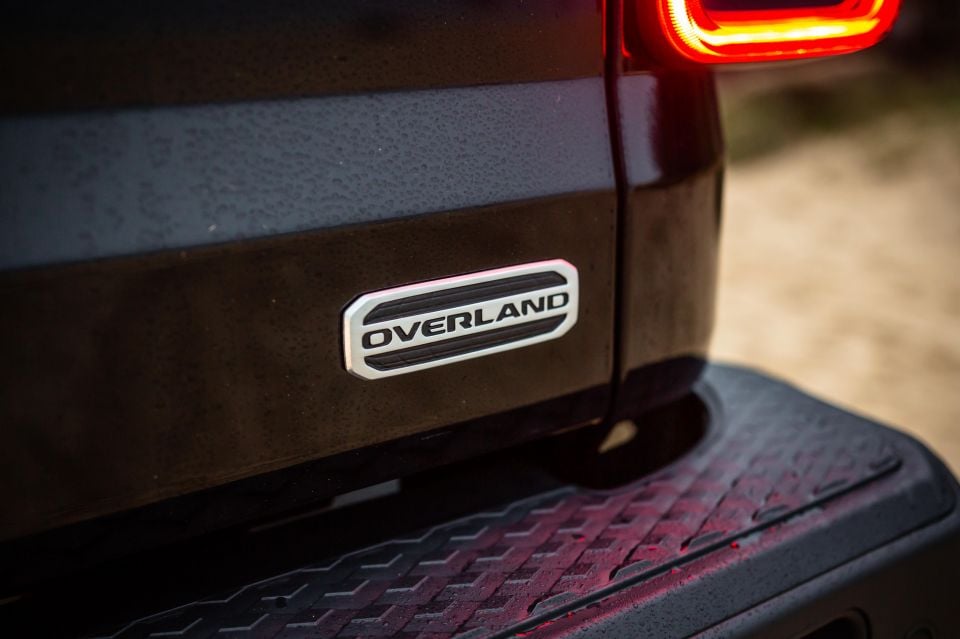
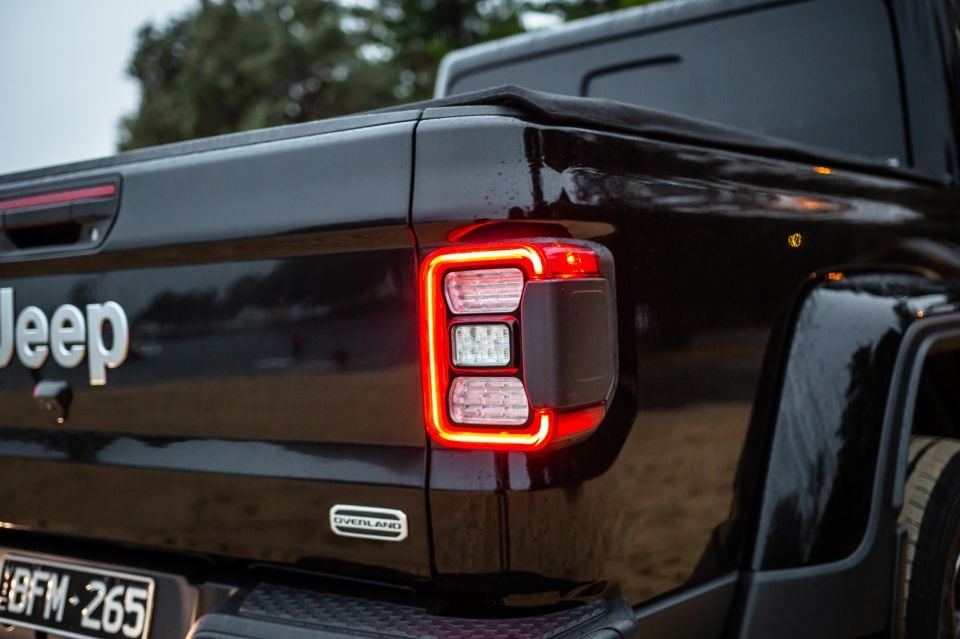
There’s also the Volkswagen Amarok Ultimate 580. It’s similarly-sized and cheaper at $72,790 before on-roads, but again it’s not necessarily in the same league as far as off-road capability goes.
Standard inventory is relatively strong across the Gladiator line-up, but there’s a few option packs available for both versions including the Lifestyle Adventure Group for $3850 for the Overland.
It adds kit such as a roll-up tonneau cover, a cargo trail group with rail system, a lockable under seat storage bin, spray-in bed liner, a wireless Bluetooth speaker, a detachable, auxiliary switch bank, 240A alternator, and a 700A maintenance-free battery.
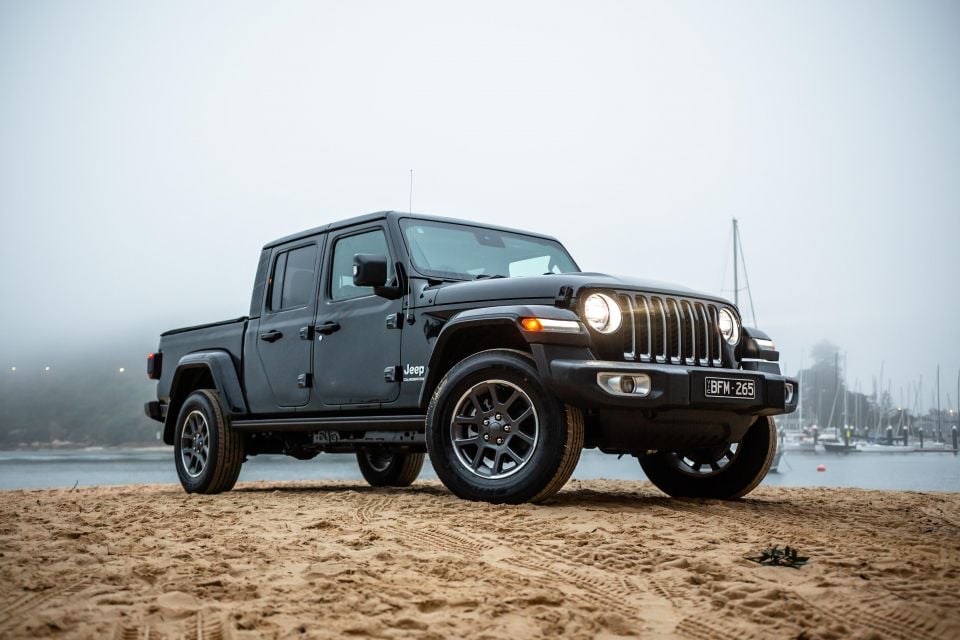
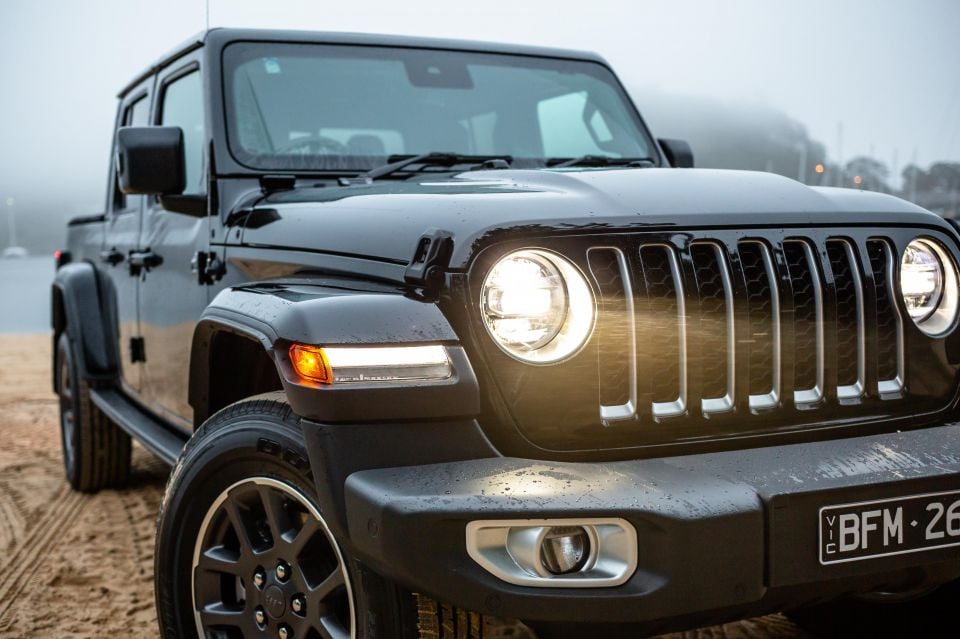
Additionally, there are 72 genuine accessories available for Gladiator, as well as four lifestyle packs: the Explorer Pack ($2999), Escape Pack ($5799), Black Pack ($1199), and Protection Pack ($649).
Without doubt, it’s one of the coolest utes on the market. It’s also entirely different to any other dual-cab ute on the market. Exclusivity still counts.
The dimensions are one thing, but the Gladiator is downright daunting to the naked eye, especially for those laying eyes on it for the first time. Even more so when you’re trying to parallel park it on a busy street with traffic looming down on you.
At least the reversing camera produces a sharp image and you’ve got front and rear parking sensors to assist.

The Gladiator is lot of truck for your money. It’s one of the longest mid-sized utes on the market, measuring 5591mm long, 1909mm tall (1905mm in the Overland), and 1894mm wide.
To give that some perspective, it’s lengthier than a long-wheelbase Mercedes-Benz S-Class and noticeably longer than the Ford Ranger Raptor (5398mm).
The tray itself measures 1531mm long and 1442mm wide from the top, while depth is 445mm. Certainly not the longest tray, but longer than the Ranger Raptor (1485mm), which conversely trumps the Jeeps tray width with 1560mm.
Incidentally, the entire tray is fabricated from steel with four cross members made from high-strength steel, and mounted to the frame. The actual tailgate (generally heavy and awkward to drop on mid-sized utes) is lightweight aluminium and astonishingly easy when opening and closing.

All Gladiators are four-wheel drive but there are two different systems. The Overland uses Jeep’s Selec-Trac Active On-Demand 4×4 system with a two-speed part-time transfer case, 2.72:1 low range ratio, and Dana 44 axles with a 3.73 rear axle ratio.
That’s different to the Rubicon version which employs the Rock-Trac Active On-Demand 4×4 and adds a 4:1 low-range ratio, 4.10 rear axle ratio and Tru-Lok locking differentials front and back, as well as the ability to disconnect the front sway bar at the flick of a switch.
Interestingly, the Gladiator borrows various parts from Ram such as heavy-duty cooling modules, suspension components, and engine and body mounts for the rigours of off-roading and a more comfortable ride on-road.
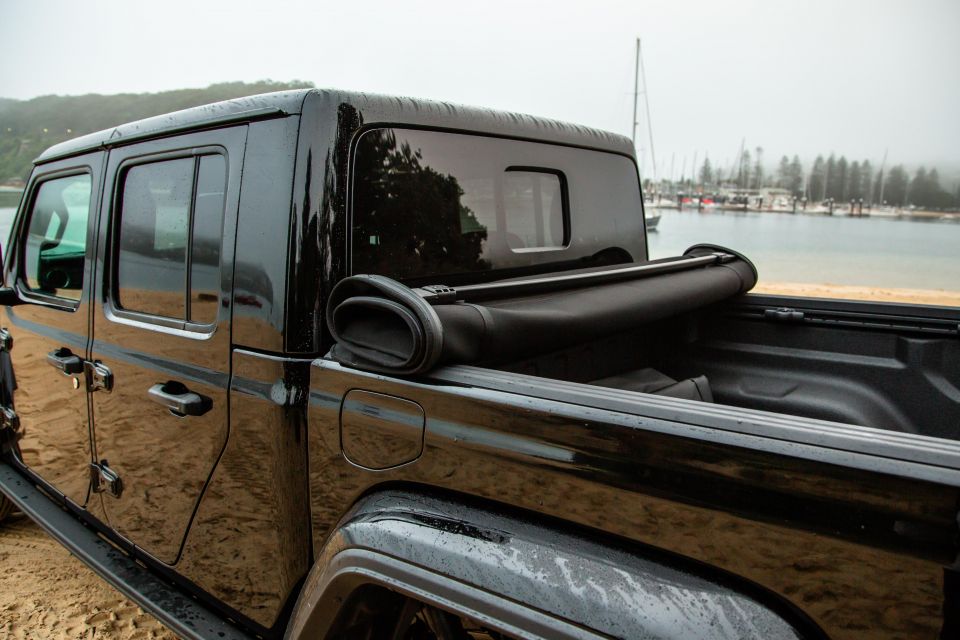
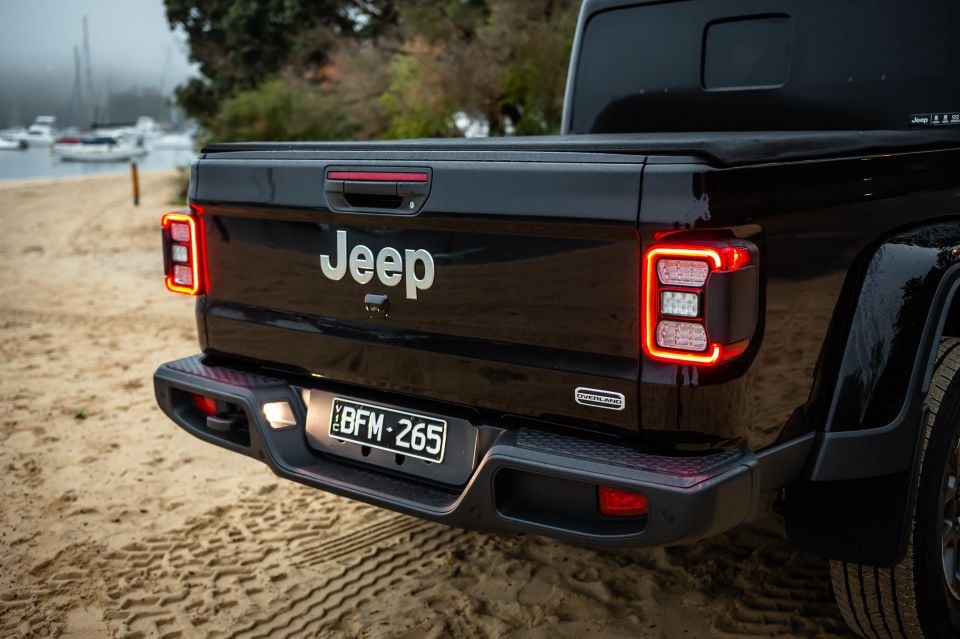
Additional kit includes LED headlights, daytime running lights and fog lights, heated front seats and steering wheel, keyless entry with proximity key and remote start, nine-speaker Alpine audio system with subwoofer and an auto-dimming rear-view mirror.
That said, the Jeep Gladiator makes do with a 2721kg trailer towing capacity, while the tray itself can take up to 620kg. Bizarrely, the tailgate can support 816kg on its own.
One of Gladiator’s most unique selling points is the fact that it’s the first and only convertible pick-up truck on the market, with a removable body-colour hardtop for the Overland (black for the Rubicon) that is truly dead-easy to remove.
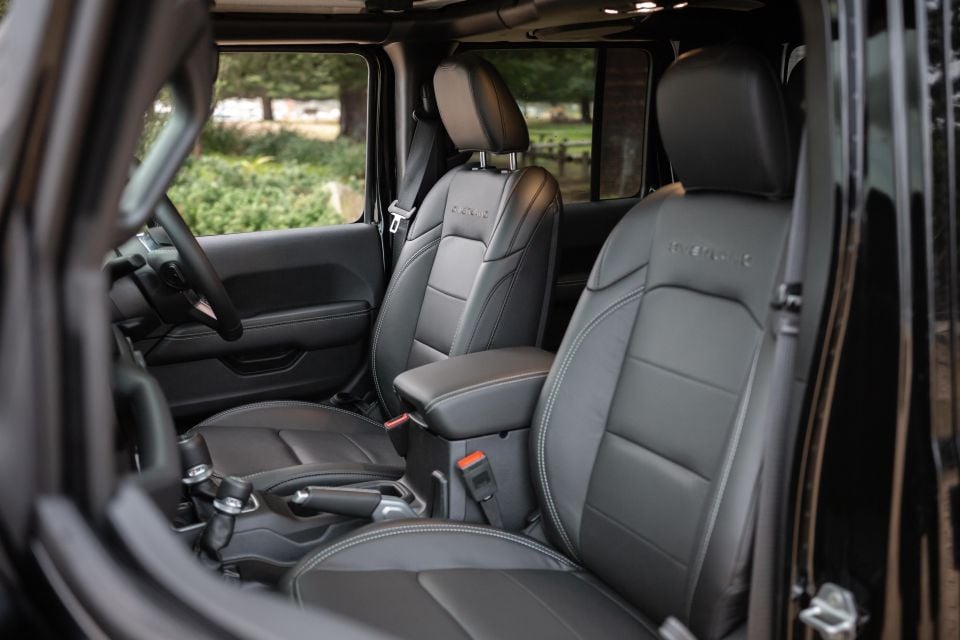
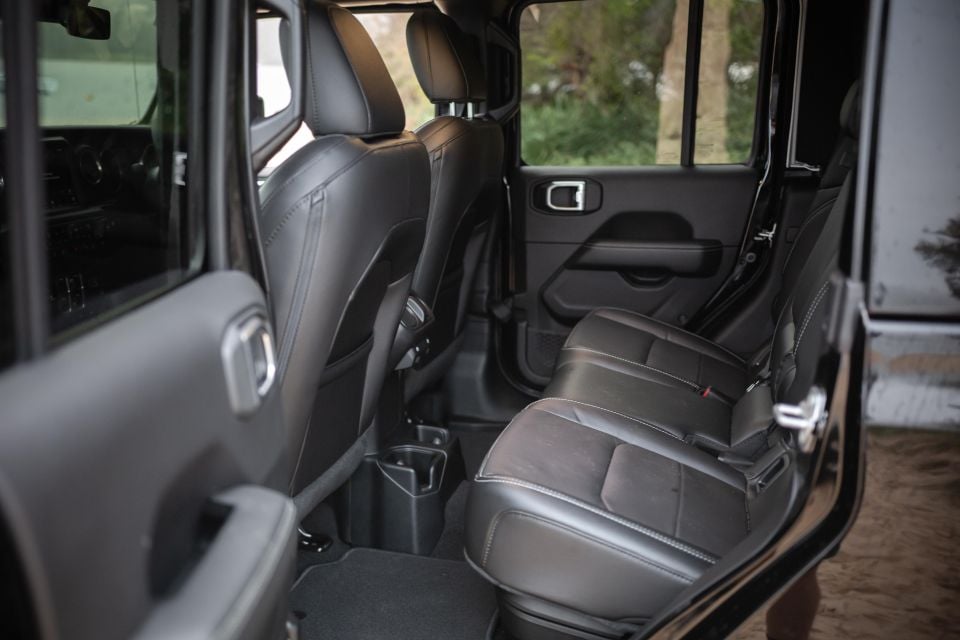
It’s a huge improvement on the previous-generation Wrangler I drove on the Rubicon Trail in the USA, because unless you had a mechanical engineering degree or were a Rubik’s Cube master, the soft-top was damn near impossible to put back on.
Only the Jeep Wrangler has been tested and that was late 2019 when it was awarded a dismal three stars from ANCAP.
Although it gets autonomous emergency braking (AEB), blind spot monitoring, rear cross-traffic alert and adaptive cruise control with as standard, it misses safety features including lane-keep assist and lane-departure warning.
It also goes without curtain airbags for rear-seat passengers.
It’s not plush, but the Gladiator (especially in Overland trim) is genuinely comfortable place to spend some time.
Gone are the anodised dash panels from the Wrangler, and in their place is stitched leather trim which looks and feels more luxurious.
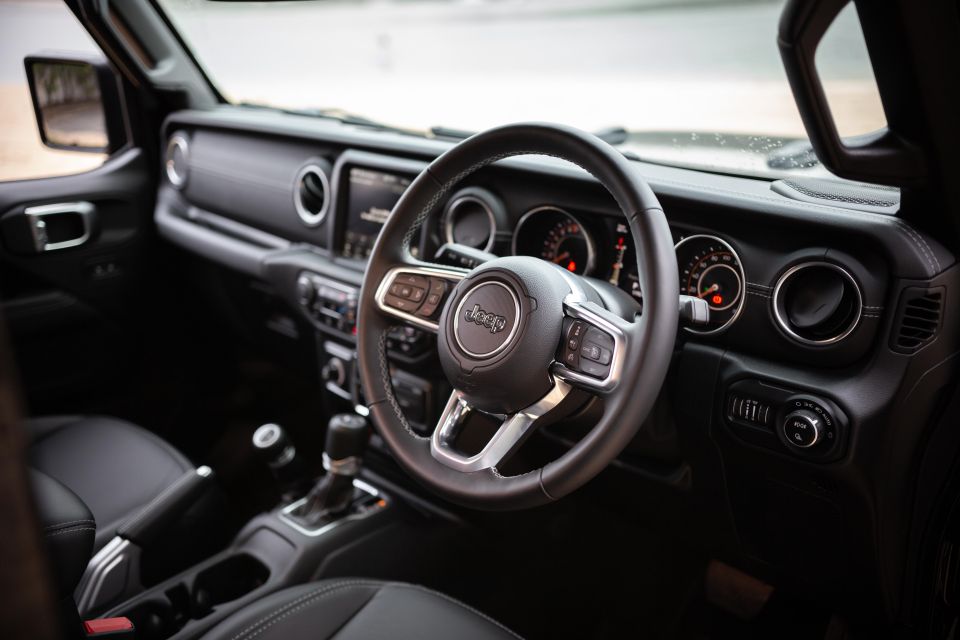
The leather seats are more than just comfortable, with thick cushioning and solid levels of bolstering to stop any sliding in the corners. Even the three-spoke steering wheel is thickly wrapped in quality leather and feels as good as any luxury car.
Also good is the high-set driving position, which offers excellent forward vision without feeling like you’re perched on top of the vehicle. It’s similar to the Land Rover’s Command View in some ways.
There’s a good deal of space up front for both driver and passenger, albeit for the complete lack of a footrest in the driver’s footwell. It’s fine around town, but longer drives will have you searching in vain for a place to rest your left foot.
Along with the leather upholstery and mostly soft touch materials, all the switchgear and plastic bits, trim and grab handles feel incredibly robust.
The individual power window switches as well as the touchscreen are specially sealed with a rubberised material that also seems to act as damping system, eliminating squeaks and rattles. I suspect they’re also water resistant.
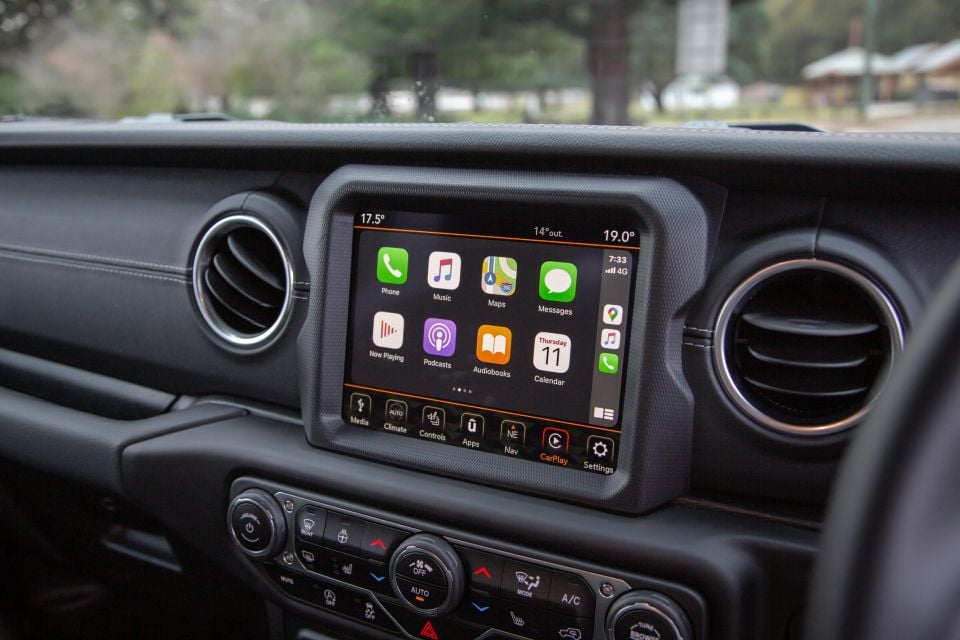
The Infotainment system is easily the most intuitive in class and the 8.4-inch screen provides a high degree of colour and clarity, as well as a multitude of information including Apple CarPlay and Android Auto.
There’s also a range of ‘off-road pages’ to show things like wade depth and temperature monitoring.
Moving to the second row and the seats are just as comfortable, though far better for two adults than three. Legroom is more than sufficient and headroom is fine for those under 180cm.
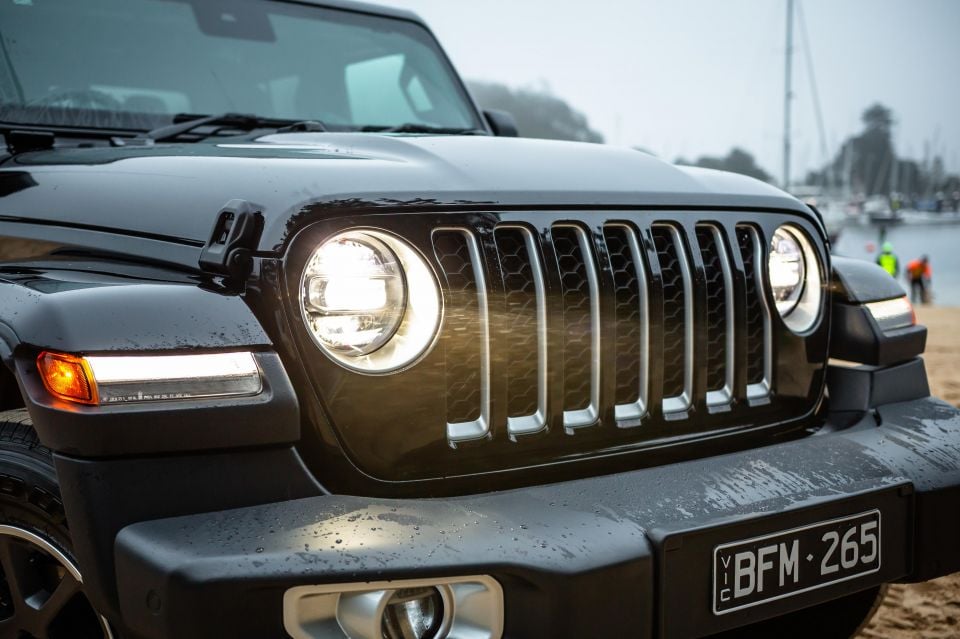
Storage compartments are everywhere, including under the rear seats. There are two USB-A ports and three USB-C ports scattered around the cabin, as well as two or three 12V receptors for all manner of charging.
Honestly, you’ll want for nothing inside the Gladiator.
All Gladiators get the same 3.6-litre Pentastar V6 petrol engine making a healthy 209kW of power and 347Nm of torque delivered to all four wheels through an eight-speed auto transmission.
Jeep claims a combined consumption of 13.1L/100km, but we used more than that around town – closer to 17L/100km thanks mainly to the sharp throttle response.

Where expert car reviews meet expert car buying – CarExpert gives you trusted advice, personalised service and real savings on your next new car.
There’s no question this proven V6 petrol is up to the task. It’s got just enough grunt to get the Gladiator up to speed in a relatively brisk fashion.
It’s not exactly quiet, mind, because although it tends to leap of the mark thanks to a trigger-happy throttle, it lacks some torque in the mid-range and needs to pull a few more revs to compensate. A torquey diesel would be ideal.
However, it’s the ride comfort and ability of the Gladiator’s suspension system to iron out all manner of bumps and blemishes that surprises most.
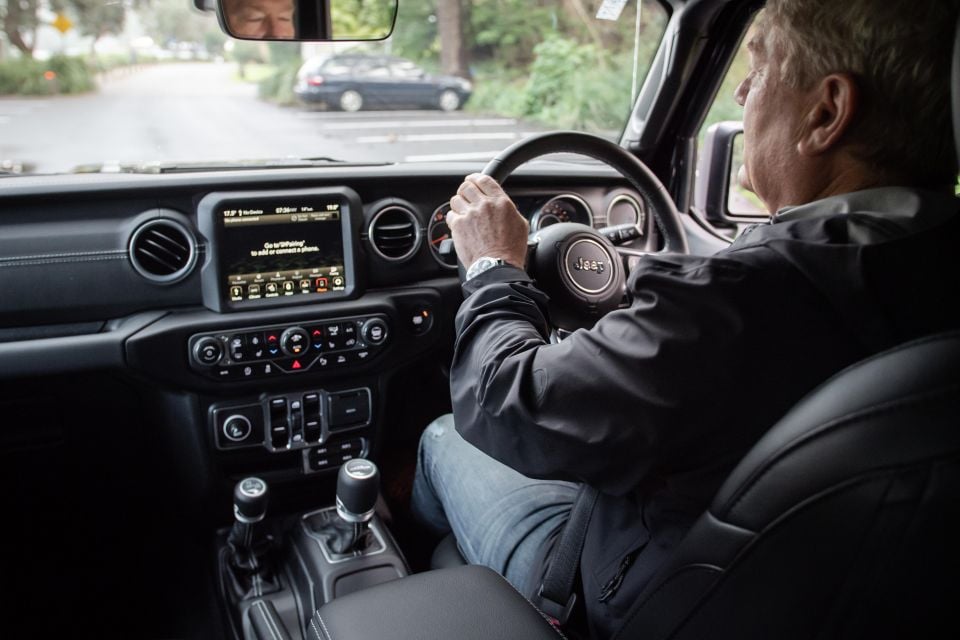
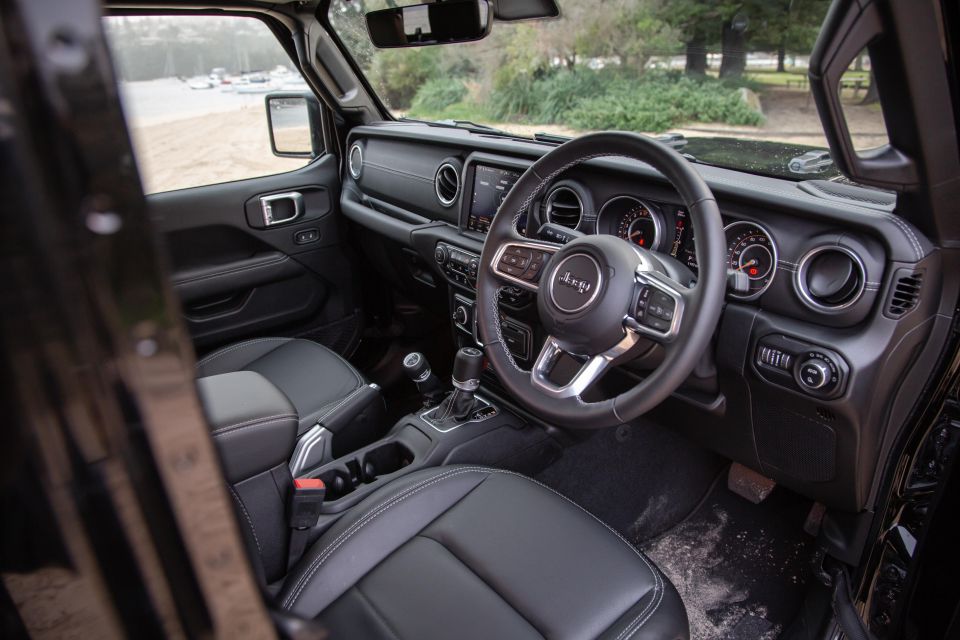
Nothing has changed in that regard. The roads we sampled in the USA were as bad as they are in parts of Sydney. That’s a combination of broken road, deteriorating edges, and generally poorly-maintained surfaces – the Gladiator isolates all but the very worst of them from the cabin.
And while I recall significant tire roar in the Rubicon at highway speeds, our Overland running on road tires produces little if any intrusive noise. It’s a pleasant change and a key difference between the two variants.
Much of the Gladiator’s ride comfort comes down to its longer wheelbase over the Wrangler. The chassis is more composed and less busy, which is certainly worth consideration.
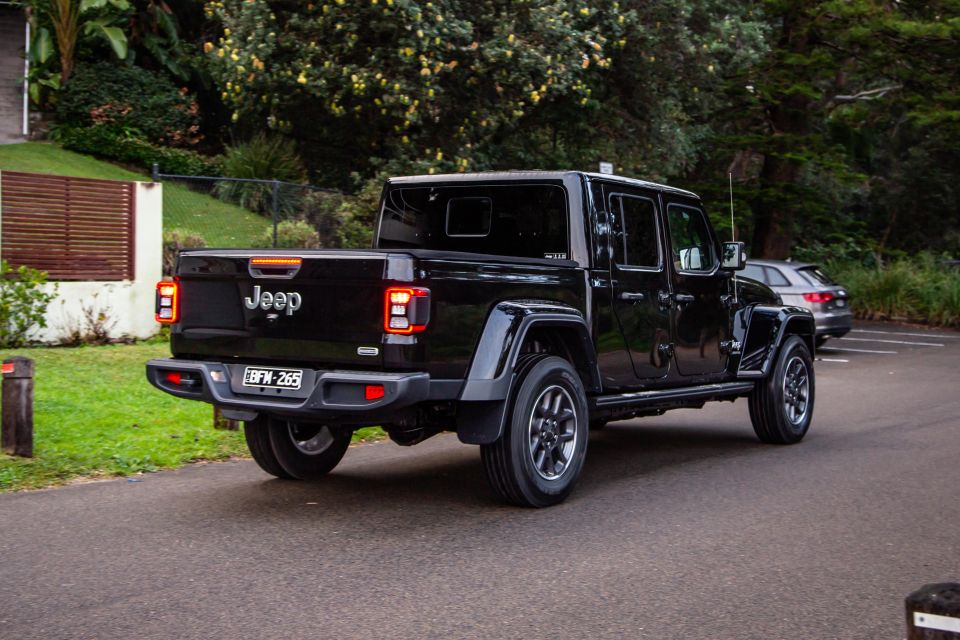
All-in-all it’s an easy vehicle to manage even in suburbia, with nicely-weighted steering and a progressive brake pedal.
Interestingly, the Jeep’s turning circle is listed at a wide 13.6m but I can tell you it feels far tighter and more manageable than that on the road.
For a full off-road review of the Gladiator, check this out
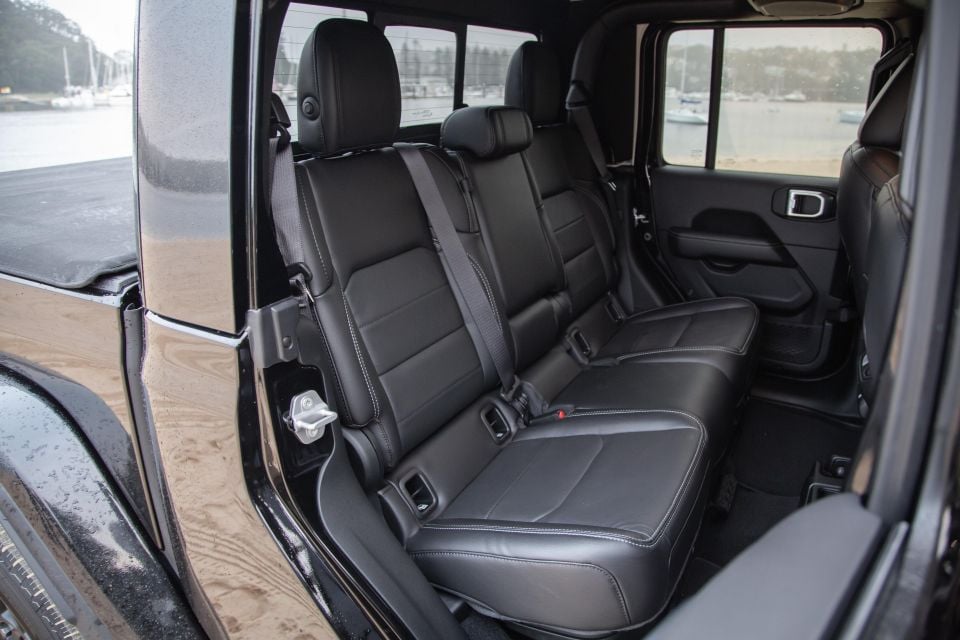
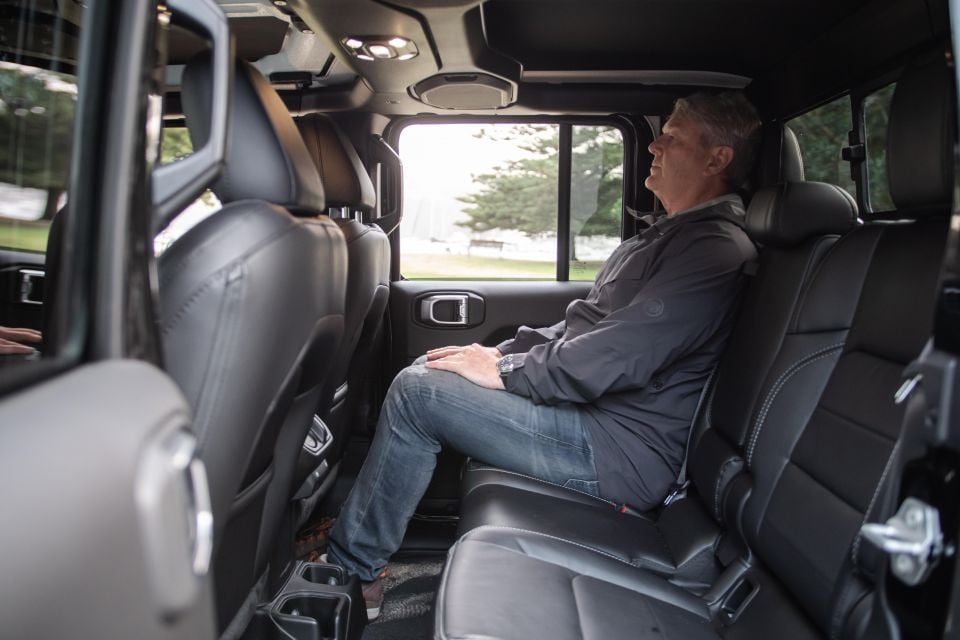
The Gladiator is covered by a five-year, 100,000km warranty including five-year capped-price servicing ($399 per service) and lifetime roadside assist as long as you service the vehicle at a Jeep dealer.
It’s a given the Jeep Gladiator is among the best off-road utes on the market. but what will surprise most is the fact its also genuinely good on-road. offering one of the most compliant rides in the business.
It’s certainly up there with the Ford Ranger Raptor.
As good as the package is, the Gladiator faces several issues. It’s pricey, there’s no diesel, and towing capacity and payload are down compared with some rivals.
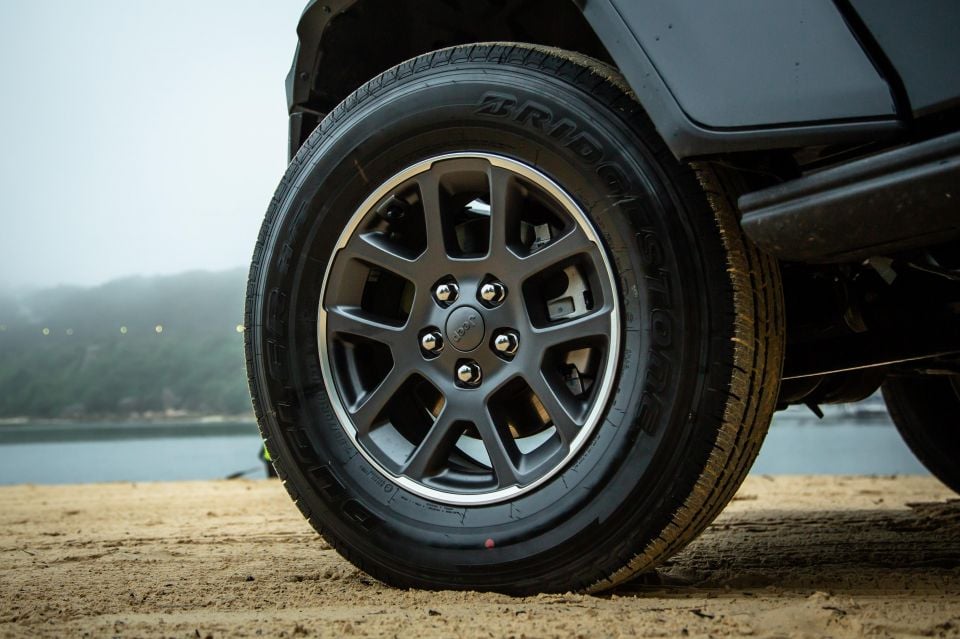
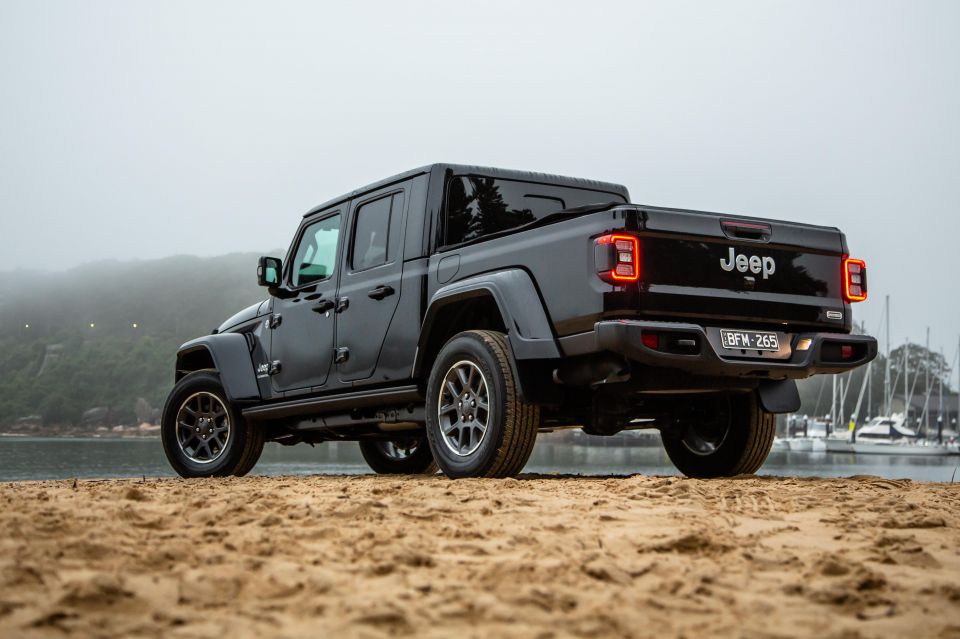
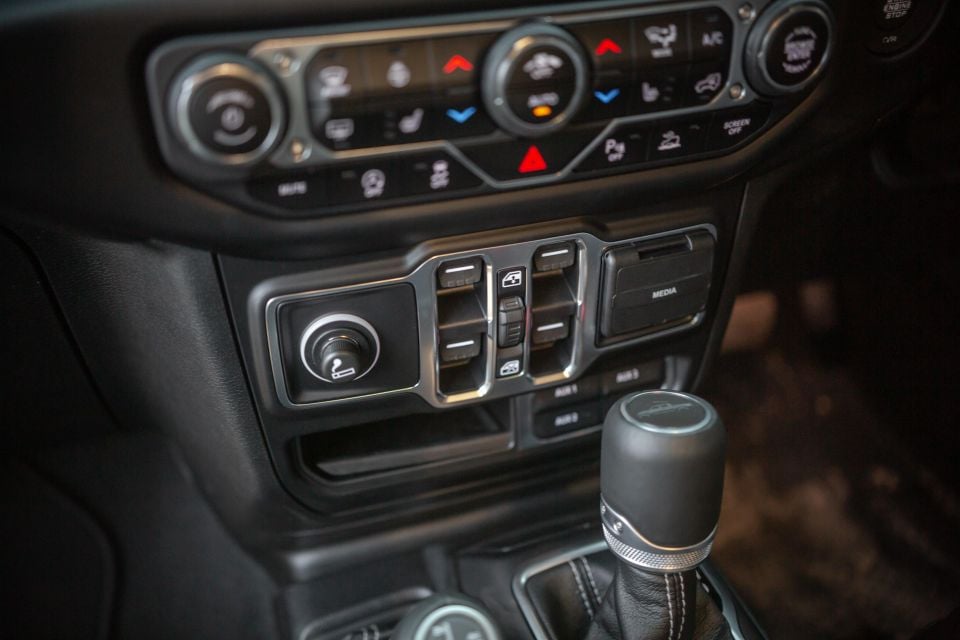
Still, it’s the coolest truck out there and is likely to find favour amongst Jeep aficionados and style-conscious tradies with plenty of work on.
Where expert car reviews meet expert car buying – CarExpert gives you trusted advice, personalised service and real savings on your next new car.


Angus MacKenzie
4 Days Ago
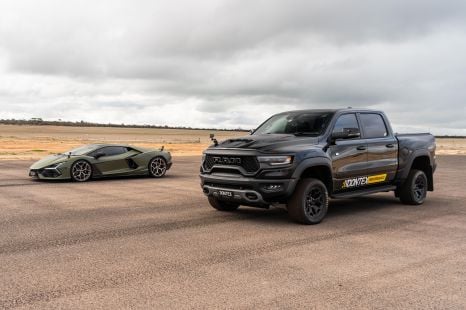

Paul Maric
3 Days Ago
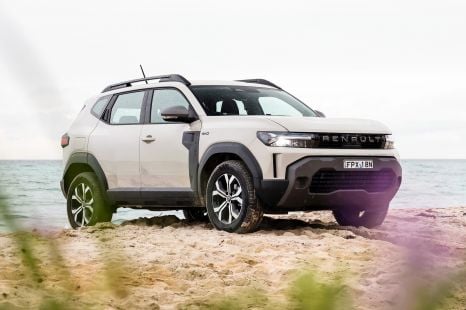

Max Davies
3 Days Ago
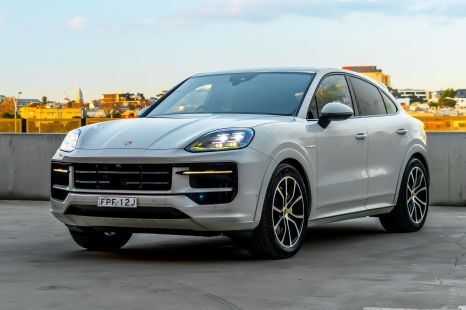

James Wong
3 Days Ago
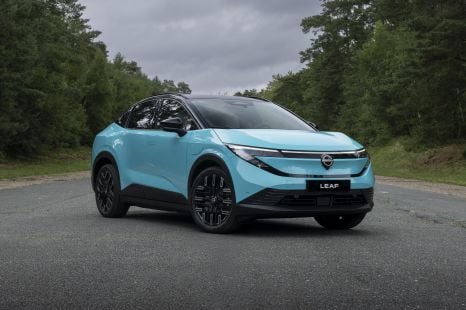

Shane O'Donoghue
2 Days Ago
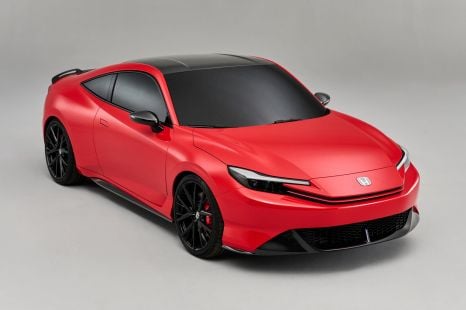

Damion Smy
1 Day Ago